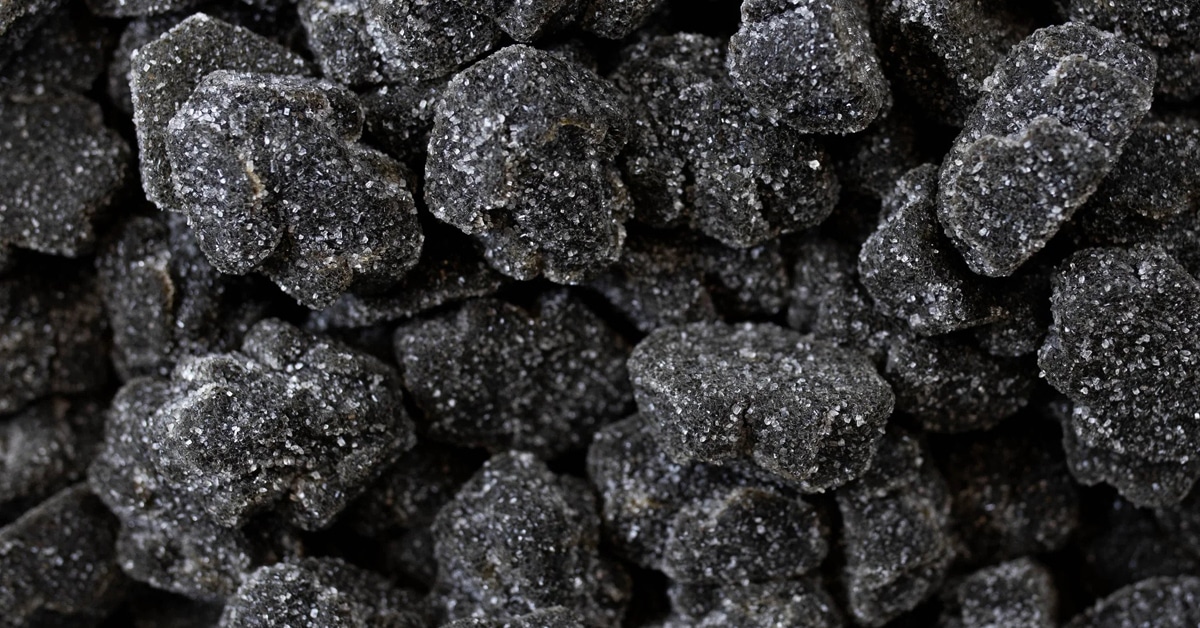Black Candy – Diversity Of Sweets Beyond Licorice
With its deep, dark color and bold appearance, black candy is a popular choice for special occasions and celebrations.
Did you know that black candy is associated with healing in some cultures? Even more – it’s used to soothe sore throats and digestive issues.
Please leave a review or any memories of this snack in the comments at the bottom of this page. Thank you!
Maybe that’s why candy manufacturers all over the world have embraced the trend, creating a wide variety of black candy options to satisfy even the most discerning sweet tooth.
In this article, we’ll take you on a journey through the complex world of black candy.
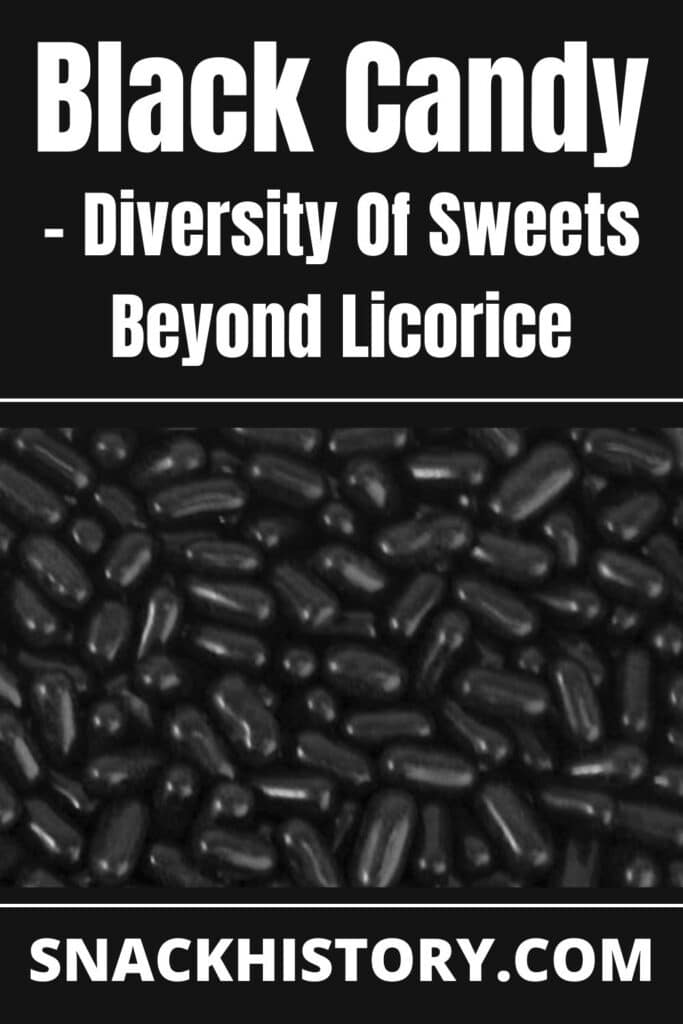
History of Licorice Flavor
When it comes to black candy, one flavor that immediately comes to mind is licorice. This distinct flavor has a long and fascinating history, and it’s one that’s closely intertwined with the world of black candy.
Since ancient times, people have consumed licorice, which is said to promote longevity and energy. It is sometimes used as a beautifying agent and aphrodisiac – an “elixir of life.” Great amounts were unearthed with the amazing riches of King Tut and other Egyptian monarchs – for it was believed that the licorice might be used to produce a delicious drink in the next world.
Eating the roots of licorice plants, according to the Chinese (going back 5,000 years), would give one endurance and strength. Since it is thought to complement the actions of other herbs, licorice continues to play a significant role in Chinese herbal mixtures.
Alexander the Great, the Scythian army, Roman Emperor Caesar, and even India’s renowned prophet, Brahma, are all on record acknowledging the beneficial characteristics inherent in licorice. Others, such as Brahma and ancient Chinese Buddhist sages, were aware of licorice’s excellent therapeutic effects, while warriors chewed it to quench their thirst while on the march.
Although we are all familiar with licorice-flavored candies today, licorice did not first emerge in confections until the 13th century CE. It was most often produced in beer before then, which was drunk both recreationally and medicinally. Licorice was increasingly used in cakes and other confections throughout the Renaissance, most notably those made by the Pontefract Abbey in Yorkshire, England.
Black licorice was first grown in the abbey garden at Pontefract, England, in the early 16th century. Later, this location became the hub of the licorice candy business.
Natural licorice may be an effective medication in addition to being used as a flavor in confectionery items. Licorice root has been used for more than 3,000 years to treat conditions including bronchial problems, mild throat irritation from coughing, stomach, and peptic ulcers, menopause, dermatitis, and infections, and to help people stop desiring sweets.
But the ability of licorice to have a sweet flavor remains its most persistent characteristic. Glycyrrhiza, its botanical name, is derived from the Greek and means “sweet root.” Even when diluted to 1 part licorice candy to 20,000 parts water, the licorice root’s characteristic sweetness may be tasted in the water. The human race will undoubtedly continue to enjoy eating licorice as a black candy.
5 Popular Varieties of Black Candy
1. Black chocolate-covered espresso beans
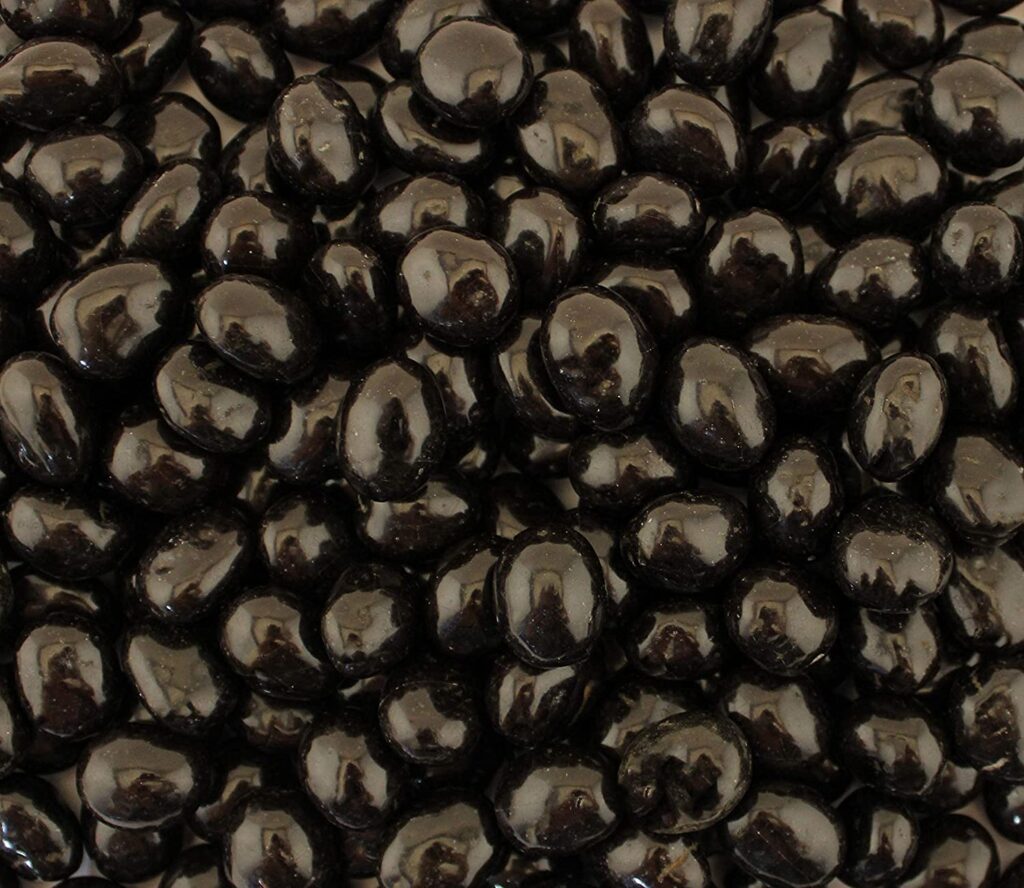
Roasted coffee beans are coated in chocolate, often milk chocolate but also frequently dark chocolate, to create confections known as chocolate-covered coffee beans. And the ones that are dipped in dark chocolate are amazing black candies. Particularly the dark chocolate variety, they are typically only very mildly sweet, and the coffee bean has a harsh taste.
They include a lot of fat, like any chocolate product, and a lot of caffeine because coffee beans make up the majority of their ingredients. Some brands have more than 300 mg of caffeine per 40 g serving.
Real espresso beans are used in these sweets, which are covered in couverture chocolate mixtures. Roasting its medium-dark roast mix is the first step in the process of making chocolate-covered espresso beans. The balanced flavor and acidity of medium-dark roasted coffee are ideal for balancing the sweetness of chocolate.
Chocolate-covered espresso beans are not only delicious but also a terrific way to stay energized all day. Espresso beans can contain more caffeine when consumed whole than when prepared into a cup of coffee. Only a few espresso beans are needed to make the same amount of coffee as one cup.
Coffee and chocolate are both great antioxidant providers, which are nutrients that boost the body’s immune system. Chocolate-covered espresso beans are very useful to have on hand in the winter.
The calories in espresso beans are very low. Compared to other premium chocolate treats, each bean contains only 14 calories, which is a lot less. Espresso beans that have been wrapped in chocolate are a popular method for health-conscious people to indulge their sweet cravings.
2. Oreo Cookies
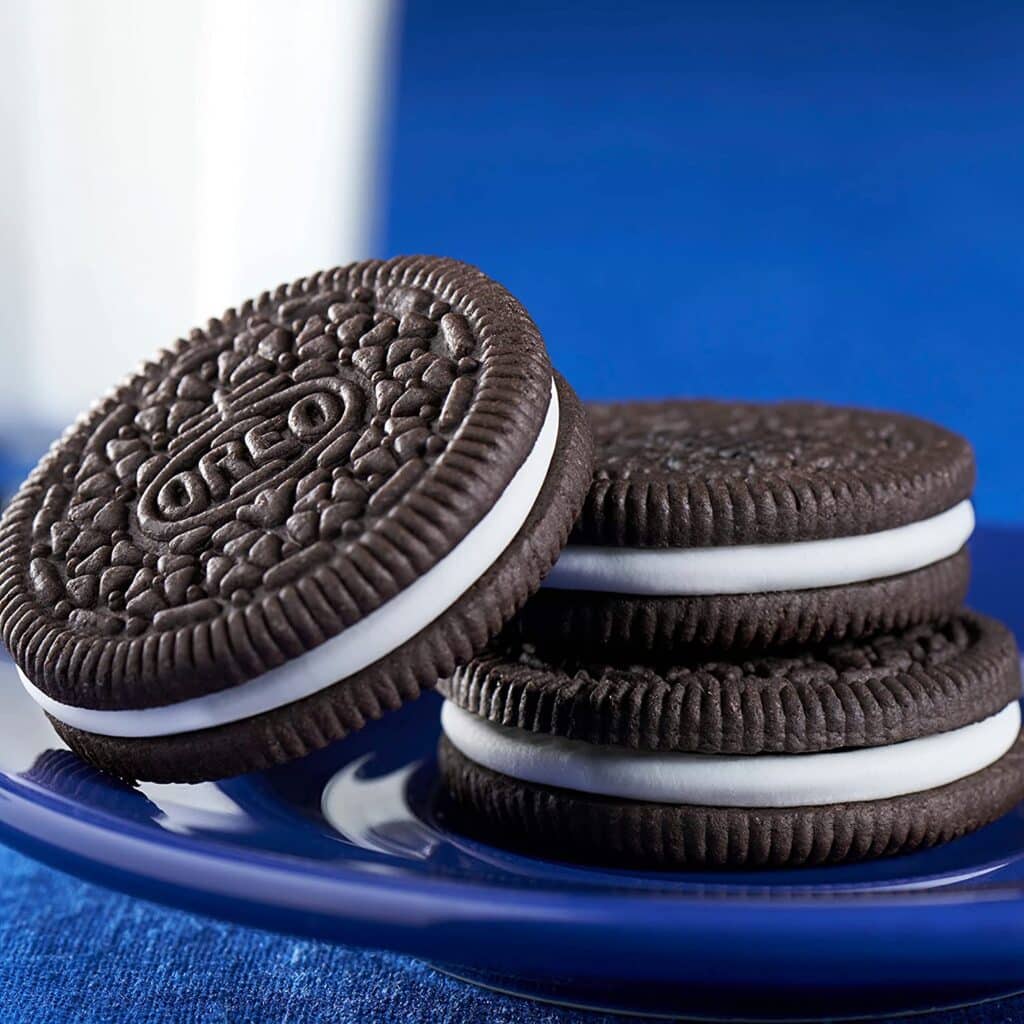
For more than a century, Oreos, a sandwich cookie made of two chocolate wafers and a sweet crème filling, has brought happiness to people all over the world. The cocoa powder used in the chocolate wafers, which gives them their deep, dark color, is what gives the cookie black candy color. Since its debut in 1912 (as the Oreo Biscuit), the Oreo has grown to become the best-selling cookie of the 20th century, with more than 491 billion Oreo biscuits having been sold to date globally. The top five nations in terms of sales are the US, China, Venezuela, Canada, and Indonesia.
Oreo Sandwich in 1921, Oreo Creme Sandwich in 1948, and Oreo Chocolate Sandwich Cookie in 1974 were the three names that the Oreo Biscuit went by. Over the years, it has mostly maintained the same design with very few alterations. With the name Oreo and a wreath around the edge, the first design was straightforward. The business improved the initial design in 1924 to go with a 1921 name change. The 1924 version had two turtledoves and a ring of laurels. The intricate design used now originally debuted in 1952, 20 years later.
Early in the 2010s, Oreo started producing limited quantities of cookies with more unusual flavors. The 100th anniversary Birthday Cake Oreos, which were first released in 2012 and are usually only available for a limited time, are now always accessible.
3. Haribo Katinchen
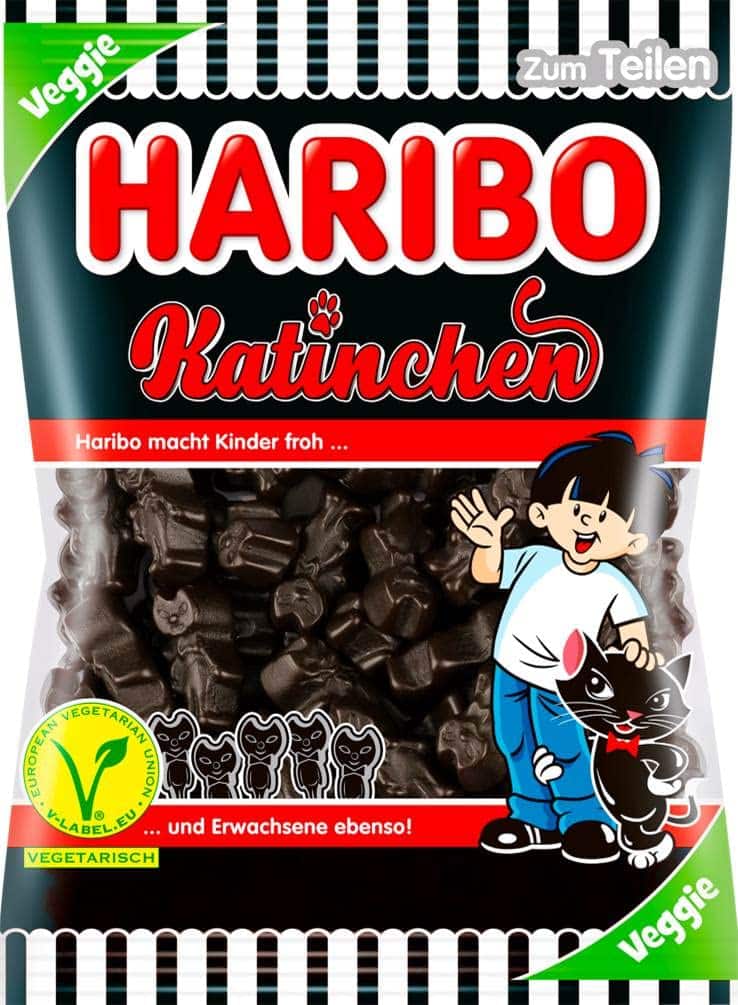
The Haribo Katinchen gummy bear was a groundbreaking new confection invented in 1922 by 29-year-old German candy manufacturer Hans Riegel in his hometown of Bonn. Haribo Katinchen is renowned for its distinctive black candy color and fruity flavor.
Candy enthusiasts from all around the world like these little cat-shaped soft and chewy candies. Haribo Katinchen’s distinctive taste and look are attributed to the use of licorice extract, which gives the candy its dark hue. The business is renowned for both its premium ingredients and its imaginative and fun confectionery creations.
The firm also makes other well-known gummy sweets, including Goldbears, Happy Cola, and Peaches, in addition to Haribo Katinchen. People of all ages like these sweets, which are sold in shops all around the world.
Because of its unusual black candy-color appearance and wonderful flavor, this candy is definitely a delectable delicacy that is guaranteed to please anybody with a sweet craving thanks to its distinctive licorice flavor and cute cat design.
4. Twizzlers Nibs Black Licorice Candy
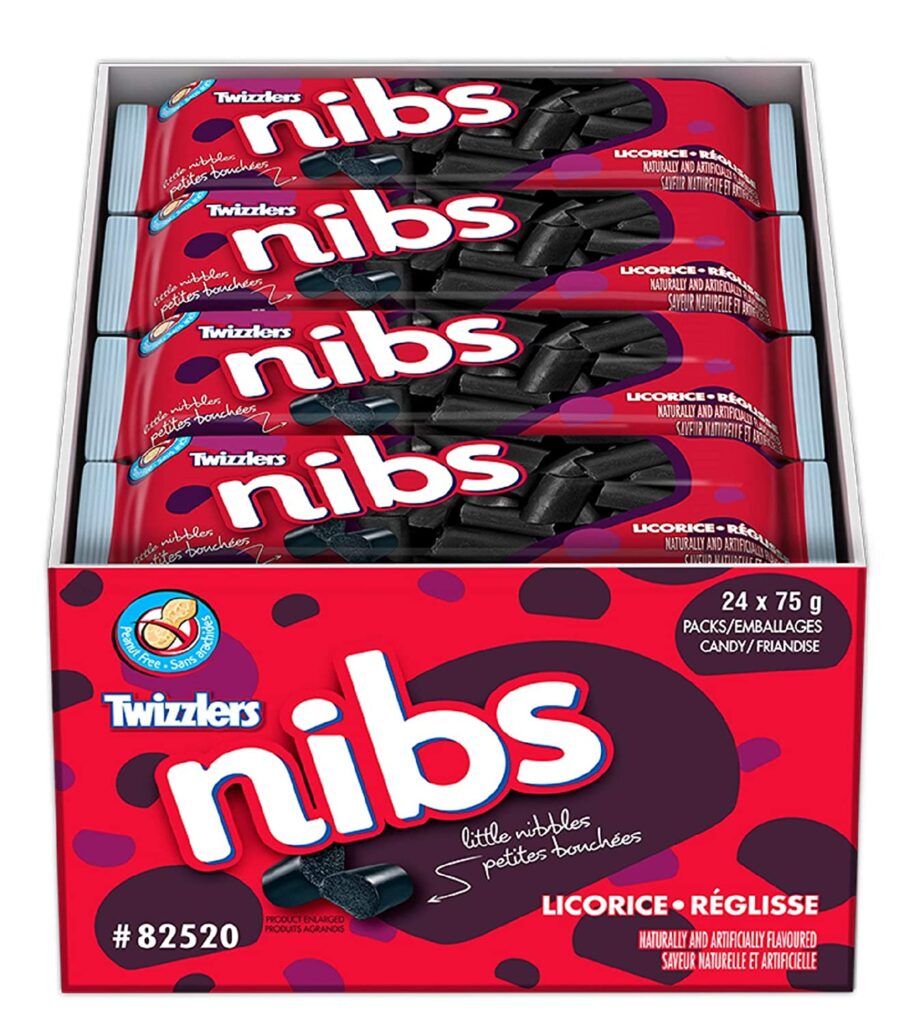
Nibs are black, licorice black candy bits that are designed to be nibbled on. Small fragments of a product are referred to as “nibs” in the confectionery business. Cacao nibs, which are the bitter yet tasty chocolate morsels formed from the beans of the cocoa tree, are where the term “cacao” first appeared in the business.
Nobody is certain whether it was in the 1930s, immediately following the creation of Twizzlers, or sometime later that Y&S added their Nibs to the Twizzlers licorice line. Even though the business was already selling close to 50 million pounds of licorice annually by 1975, to distinguish the Twizzlers and Nibs products, Y&S hired a Madison Avenue advertising agency to market each one independently. The advertisement worked pretty well, and today, the Twizzlers Nibs are definitely among the most popular black candies.
5. Haribo’s Piratos
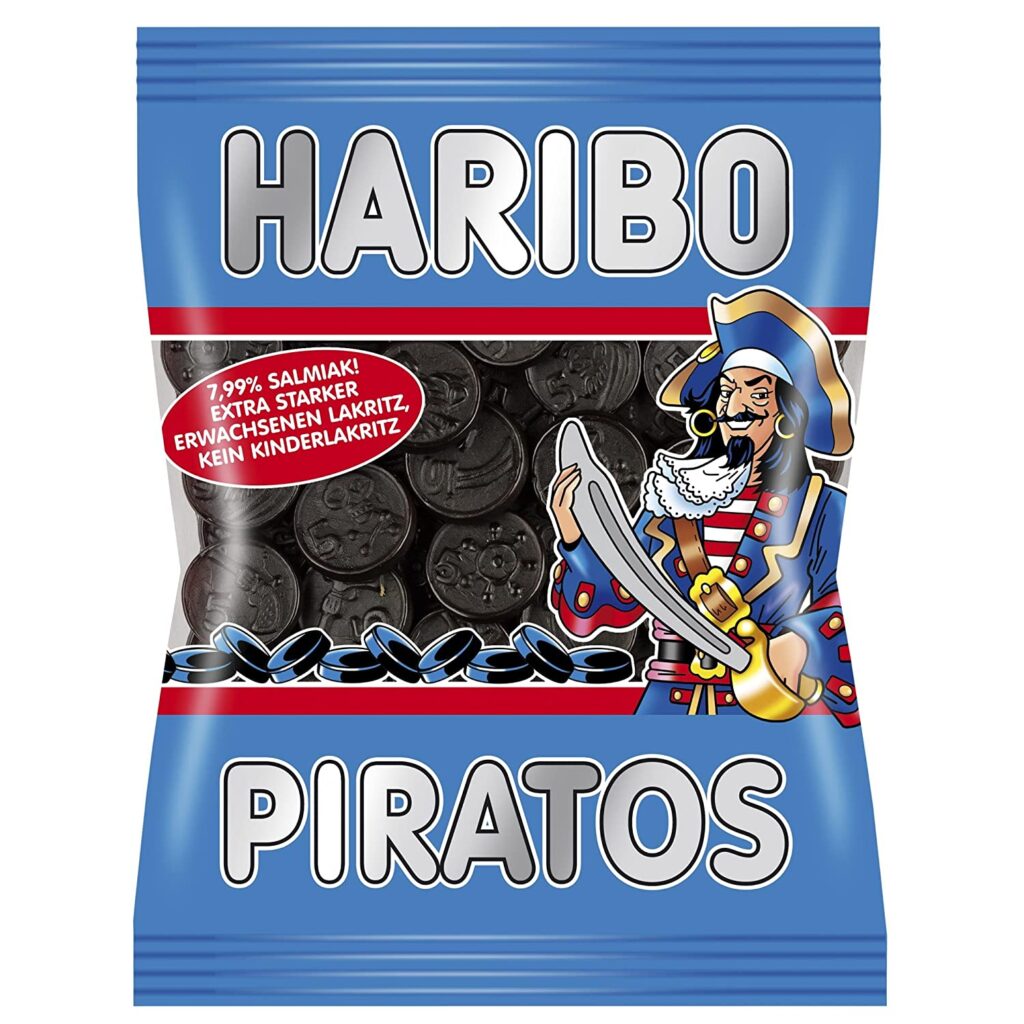
Haribo’s Piratos are delicious black chocolate coins that have been popular for decades. These licorice coins contain 7.99% salmiak salt (ammonium chloride), making them an especially salty reward for mature pirates. Haribo’s Piratos are Soya free, Nut free, Gelatin free, and vegetarian.
This German family business, which was established in 1920, currently dominates the market for fruit gummies and licorice. In 120 nations, Haribo candies are sold, and 16 countries, including Pontefract in the UK, manufacture them.
Piratos by Haribo were created in Denmark and released in 1955. They continue to be made at the Danish factory of Haribo, using traditional Scandinavian salty licorice as a model. In Denmark, the item is still widely used and can be found in practically every supermarket, shop, gas station, movie theater, and vending machine.
Bottom Line
In this article, we explored some of the most popular black candy varieties. The history and cultural significance of black candy vary depending on the region, but it has been a popular treat for centuries. It is a unique and intriguing confectionery that has gained popularity among candy enthusiasts around the world. Its unique flavor, dark color, and cultural significance make it a fascinating and complex confection.

Nato is a content writer and researcher with a background in psychology. She’s passionate about writing about the candy industry and exploring the cultural significance of sweets and treats. She believes that the stories behind our favorite snacks can reveal a great deal about our values.
Please leave a review or any memories of this snack in the comments below. Thank you!
Click here for a full A-Z list of Snacks and Candy
